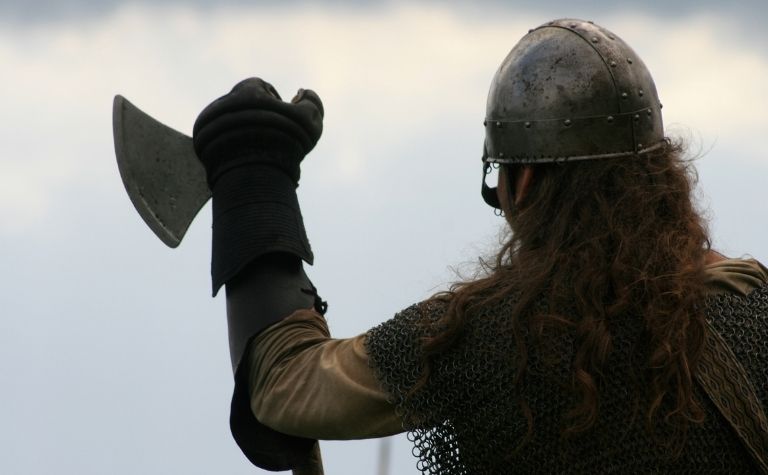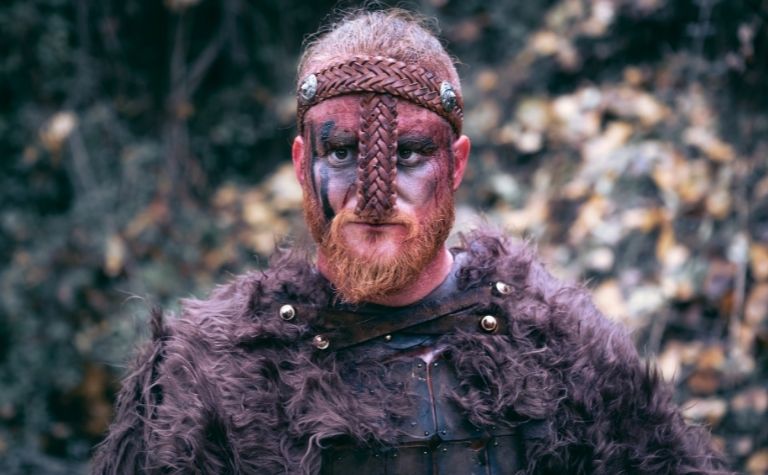When people research Vikings, one of the most common questions they ask is how they managed to communicate despite being spread from Canada to the Baltic Sea.
The answer is simple – they spoke a common language, making communication easier. But what was that language?
Vikings primarily spoke Old Norse, which was commonly spoken in Scandinavia and other Nordic settlements. The language included several dialects.
Additionally, as the Vikings spread around the world, they adopted other languages, particularly Icelandic and Anglo-Saxon.
The rest of this article will examine whether it is possible to learn Old Norse today, consider the languages that are linguistically similar to Old Norse, and provide readers with short, basic language lessons that can help them start learning the language.
Also see Why Did the Vikings Say Skol? to learn more.

Is It Possible To Learn Old Norse Today?
If a person is interested in Vikings and the Viking era, they are also often interested in learning to speak the language. But is it even possible to do so?
Are there resources available to help people learn Old Norse?
It is possible to learn Old Norse today.
There are several ways a person can learn the language, including taking classes where an instructor can help them understand the language and learning independently through videos and language guides.
There were several dialects of Old Norse, including:
- Old West Norse
- Old East Norse
- Old Guntish
In most cases, students learn Old West Norse when learning “Old Norse” today, unless they take a specific, niche course for one of the other two dialects.
It is possible to learn both written and spoken Old Norse.
However, if a person does not have prior experience with the language, learning to speak it is the easier of the two options.
This is because spoken Old Norse has some similarities with English.
Many words from the language were borrowed by Old and Middle English and still survive today.
Additionally, while Old Norse is an inflected language, the level of inflection is similar to that found in German and Scandinavian languages today. [1]
This means that people who speak these languages will also have a relatively easy time learning Old Norse.
The Old Norse writing system, on the other hand, was (and is) more complicated.
The language was written in both the Latin alphabet – that is, the alphabet that English uses – and in Runic – most commonly Younger Futhark. [2]
People wanting to learn written Old Norse will have to familiarise themselves with the Younger Futhark script, which is very unlike the Latin alphabet commonly used today.
Additionally, the oldest Old Norse writings are not in Younger Futhark but Elder Futhark. [3]
Though this script is similar to the later version, it is more complex and has more characters.
This means that learners will essentially be learning a third set of alphabets should they wish to learn this runic script as well.
Also see What Kind of Bows Did the Vikings Have? to learn more.

What Language Today Is Closest to Old Norse?
One of the most popular ways to learn a dead language is first to learn a language that is a close modern relative.
So, for example, if a person is interested in learning ancient Greek, they might learn to speak modern Greek first.
Icelandic is the modern language that is closest to Old Norse.
The written system for modern Icelandic is close enough to that of Old Norse that Icelandic speakers can read Old Norse.
Some scholars claim that modern Icelandic is as similar to Old Norse as Shakespearean English is to modern English. [4]
Icelandic evolved from Old West Norse, and Iceland is the source of most of the surviving texts in Old Norse.
This is also why Old West Norse is the most commonly taught form of Old Norse today.
Other languages that are similar to Old Norse include:
- Danish
- Faroese
- Norwegian
- Swedish
Danish, Norwegian, and Swedish are so similar that speakers can often understand what a native of one of the other two languages is saying.
This further confirms the close relationship they share and that the three languages all have the same linguistic source.
Aside from being an ancestor of multiple modern Scandinavian languages, Old Norse is also connected to English.
Vikings raided Britain from about the 8th century, and this contact between the two peoples resulted in contact between their respective languages.
Some of the many words that English has borrowed from Old Norse include:
- Arm (armr)
- Anger (angr)
- Skin (skinn)
- Birth (byrðr)
- Same (sami)
- Skirt (skyrta)
- Cake (kaka)
- Husband (húsbóndi)
This borrowing of words is what makes Old Norse relatively simple to learn to speak for English speakers.
There is some commonality between the two languages, which gives English speakers a touchstone they can refer back to when they learn Old Norse vocabulary.
Also see Dane Axes in the Viking Age to learn more.
How Do You Say “Hello” in Old Norse As Well as Other Common Sayings?
When learning any language, the first thing a person will learn to say is some basic phrases, including ones like “hello” and “goodbye.”
The informal word for “Hello” or “Hi” in Old Norse is “Hei.”
However, there are multiple ways to say “Hello” in Old Norse, depending on who is being addressed and whether the speaker is speaking formally or informally.
More formal ways of saying “Hello” include:
- Heill/Sæll: When talking to one man
- Heil/Sæl: When talking to one woman
- Heil/Sæl: When talking to a group of people that includes people of more than one gender
The difference between Heill and Sæll is in what the word implies.
Heill means that the speaker wishes the people spoken to good health, while Sæll means the speaker wishes them happiness.
Some other basic phrases include:
- Far vel: Goodbye
- Góðan dag/Góðan daginn: Good day
- Já: Yes
- Nei: No
- Þakka fyrir: Thank you (formal)
- Hvat segir þú?: How are you? (formal)
- Allt fínt, þakka: Fine, thanks (formal)
- Góðan morgin: Good morning
- Góðan aptan: Good afternoon
- Gott kveld: Good evening
- Góða nótt/Sof þú vel: Good night
Final Thoughts
While Vikings spoke several languages, Old Norse was the most common. People can learn the language today, especially the Old West Norse dialect.
